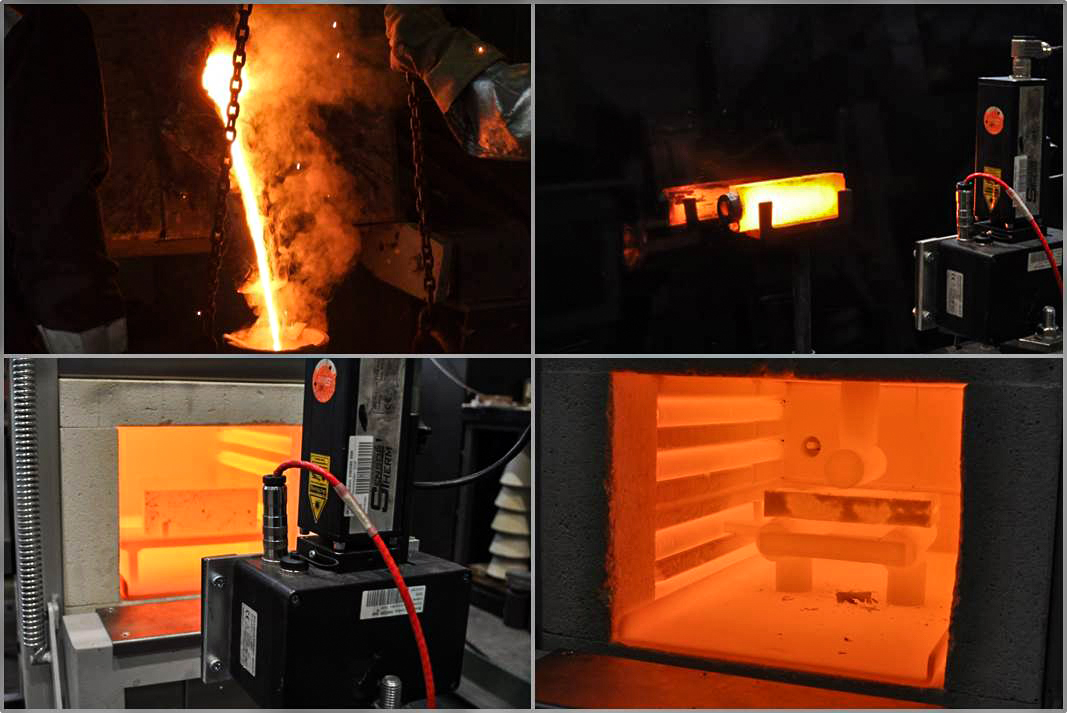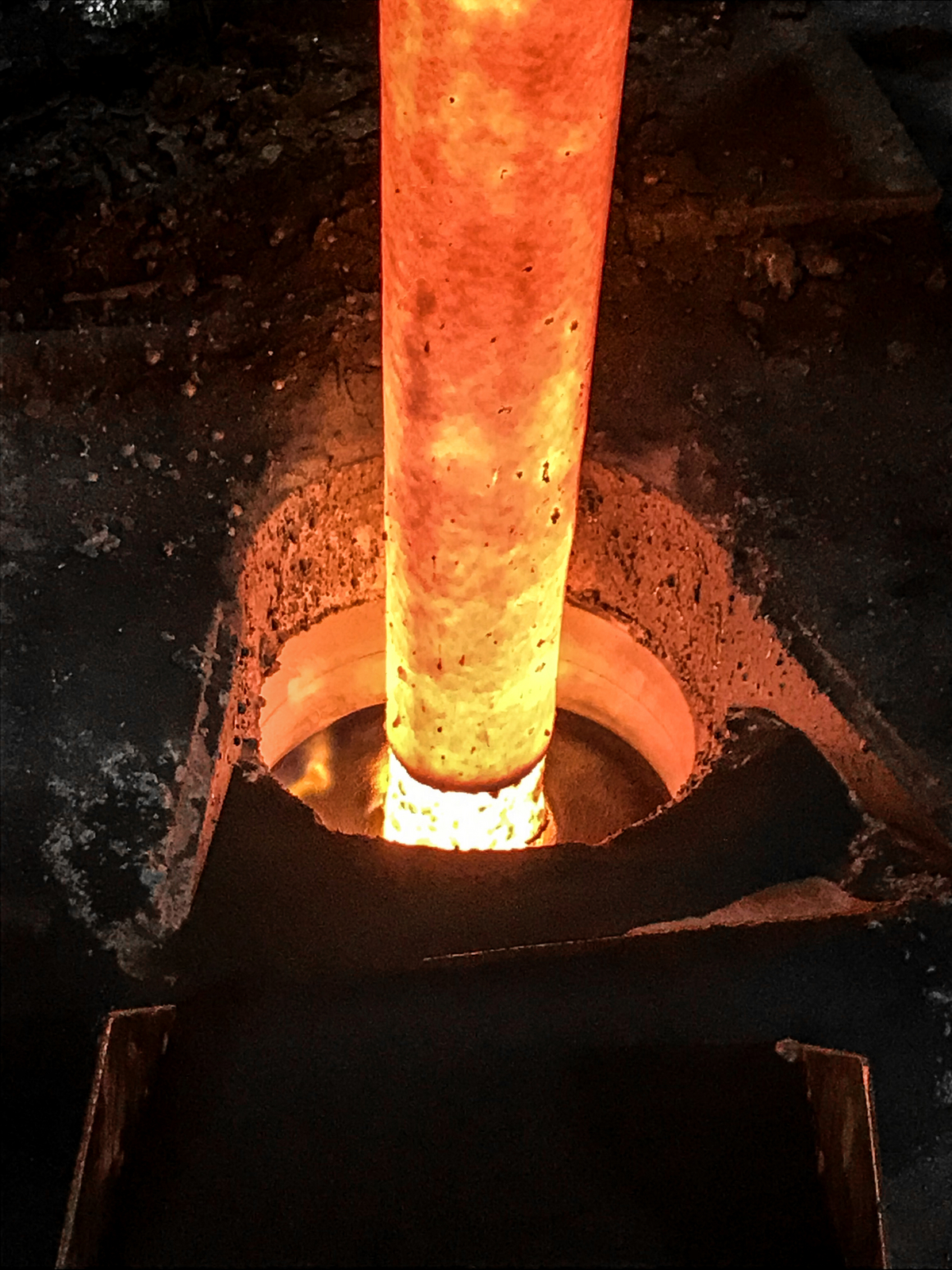Introduction
The impact of decarbonization strategies (increased scrap input, H2-based steelmaking) on the downstream side of the steelmaking process chain with a focus on the continuous casting (CC) process is part of this project.
Different aspects related to a sustainable and resource efficient CC process will be explored to reach high-quality steel slabs. The main challenge related to an increased scrap recycling is a higher input of tramp elements, such as copper (Cu). It is not satisfactorily predicted, which effects certain scrap qualities have. A higher tramp element input might have an impact on surface damage of the final slabs (crack formation tendencies) and element segregation at the grain boundaries. In this context, also the slab cooling sequence (secondary cooling zone) must be considered. A CC process fully supported by models (hybrid twins) must be developed and optimized to reach an efficient interlink between CC process data and the slab quality at the end of casting and cooling.
Moreover, investigations related to the CC process and the impact on slab quality, mould powders and their properties and the wear mechanism of the submerged entry nozzle (SEN) will be in the focus.
- Impact of changed scrap input and H2-based steelmaking on trace element segregation, oxidation phenomena, surface crack tendencies, and final product properties
- Enhanced study of the steel solidification during CC including the secondary cooling zone and digital surface defect risk analysis for high-quality CC products
- Impact of slab cooling on embrittlement phenomena and correlation between slab temperature control and definition of measures to avoid crack formation
- Physical modelling of the hot ductility behavior
- Development of a mould powder reduced in its free carbon content to prevent steel recarburization and NiO containing mould flux for CC
- Improved glaze to minimize prior damage of the refractory material during material preheating
- Experimental twin for quality prediction (quality indices)
- In-situ material characterization bending test (IMC-B test)and upgraded Simultaneous Thermal Analysis (STA + H2O furnace) with subsequent gas analytics
- Calculation software for thermodynamics, phase transformations and precipitations (IDS2.0, Factsage, MatCalc)
- Hybrid solution for heat transfer in CC based on time dependent local heat transfer data and transient physical based heat transfer model for solidification (m²CAST)
- Thermomechanic simulator Gleeble 1500 for flow curve determination, segregation measurement preparation and reheating experiments
- Hot tensile tests of in-situ melted samples using the BETA 250-5 machine
- Segregation measurements and microscopic analyses using Scanning Electron Microscopy (SEM) and Auger-electron microscopy to study the microstructure of tested samples
- Cup tests to quantify interaction between steel and mould slag andexperimental tests at a pilot as well at a real CC plant
- Investigation of the SEN’s glaze properties by heating tests in oxygen and inert atmosphere
- Continuous wear testing device (CWTD) for corrosion tests at the SEN
Results and Application
Findings are expected regarding the correlation between higher scrap input with related higher amounts of trace elements (e.g., Cu, Sn, Ni, Mo) and the risk for surface defects for CC products. The experimental findings are used for the digital prediction of surface quality problems as preventing cracks can induce energy savings during production and considerable resource savings. A significant increase in productivity and product quality is expected and accompanied studies will be done regarding the castability of new steel concepts. The experimental investigations with the IMC-B test are used to predict material behavior on an industrial scale.
An off-line hybrid approach for heat transfer in continuous casting by coupling time dependent, localized heat transfer data in the mould from fiber-bragg mould with conventional, transient model for heat conduction in cc (m²CAST) should be realized.
A new universal hot ductility physical model to predict the slab embrittlement considering recrystallization, phase transformations, damage evolution, and precipitation in alloyed steels should be developed. Incorporated segregation calculations should support to predict the influences of higher scrap inputs on the mechanical properties.
Further focus lies on the mould powder development for high-quality steel casting at high scrap input. Regarding this, an assessment of the feasibility of NiO containing mould fluxes including slag properties and impact on steel microstructure should be made.
Finally, experimental data for SEN simulation studies with focus on corrosion will be generated.

 DE
DE EN
EN![[Translate to English:]](/fileadmin/_processed_/4/0/csm_recycle49_weiss_b776401e10.png)


